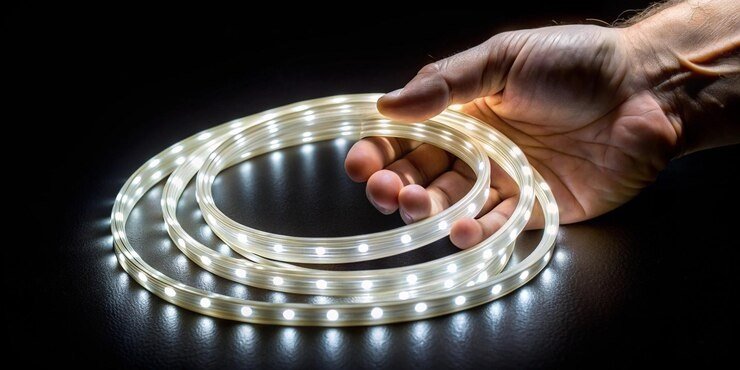The global lighting industry has experienced a dramatic transformation in recent decades, driven largely by the rise of LED (light-emitting diode) technology. Among the many innovations that LEDs have introduced, strip lights stand out as one of the most versatile and widely used products. These flexible, energy-efficient, and aesthetically appealing lighting solutions are now an essential part of modern homes, offices, retail environments, architectural projects, and even automotive design.
Behind the widespread availability of these products lies a critical player: the LED strip lights factory. These manufacturing facilities are the backbone of the global supply chain, ensuring that businesses, distributors, and consumers have access to reliable, high-quality LED solutions. Understanding the role of these factories is key to appreciating how the global lighting market functions and how it continues to evolve.
1. Manufacturing Excellence at the Core of Supply
LED strip light factories are responsible for converting raw materials and electronic components into finished lighting products. This process involves precision engineering, rigorous testing, and advanced automation.
The production line typically begins with the design and assembly of LED chips, which are mounted onto flexible circuit boards. From there, phosphor coatings, adhesives, and protective layers are applied to ensure durability and consistent brightness. Modern factories employ automated SMT (Surface-Mount Technology) machines, soldering processes, and advanced quality control systems to maintain accuracy and efficiency.
By maintaining strict production standards, these factories ensure that the LED strips meet global certifications such as CE, RoHS, and UL. These certifications not only guarantee product safety but also enable smooth distribution across international markets.
2. Driving Innovation and Customization
Another essential role of LED strip light factories is fostering innovation. With global demand expanding, customers are looking for more than just basic illumination. Factories now produce strips with varied features such as:
- COB (Chip-on-Board) LED strips for uniform lighting without visible dots.
- Smart LED strips compatible with Wi-Fi or Bluetooth for app-based control.
- RGB and RGBIC strips for dynamic color-changing effects.
- High CRI (Color Rendering Index) strips to enhance the accuracy of color perception.
Factories also offer customization for businesses and project developers. For instance, an architectural firm may require specific strip lengths, IP-rated waterproofing, or tailored brightness levels. By fulfilling such bespoke requirements, manufacturers play a central role in making LED strips suitable for countless industries and applications.
3. Ensuring Global Availability Through Supply Chain Management
The contribution of LED strip light factories extends beyond production. They are also key players in global supply chain management. With customers spread across continents, timely logistics and distribution are essential.
Factories often collaborate with wholesale distributors, e-commerce platforms, and local retailers to ensure efficient product availability. Some leading manufacturers operate their own global warehouses, enabling faster deliveries and reducing shipping costs. This strategic approach allows the global market—from small DIY consumers to large construction firms—to access LED strip lights without interruption.
Moreover, factories play a stabilizing role when demand surges unexpectedly. For example, during festive seasons, global sales of decorative lighting increase sharply. Factories ramp up production in advance, ensuring that international retailers can meet seasonal demand.
4. Commitment to Quality and Reliability
Reliability is a cornerstone of any global supply chain. LED strip light factories are tasked with ensuring that every product leaving the production line performs consistently over its lifespan. This requires implementing stringent quality control measures such as:
- Aging tests to simulate long-term usage.
- Temperature and humidity tests to evaluate performance in diverse environments.
- Voltage fluctuation tests to ensure safety and stability.
By maintaining these standards, factories build trust not only with distributors but also with end consumers who rely on LED strips for both functional and decorative purposes. This reliability contributes significantly to the reputation of global LED brands.
5. Contribution to Sustainability Goals
The role of LED strip light factories is also closely tied to global sustainability efforts. Traditional lighting technologies, such as incandescent bulbs, consume significantly more energy and have shorter lifespans. By producing high-efficiency LED strips, factories help reduce carbon footprints on a worldwide scale.
Factories are also increasingly adopting eco-friendly production practices. Many utilize recyclable materials, reduce hazardous substances, and implement energy-efficient processes. Some even invest in renewable energy sources to power their facilities. This alignment with environmental responsibility not only strengthens brand reputation but also supports countries and businesses striving to achieve sustainability goals.
6. Supporting Global Industries and Economies
The versatility of LED strip lights means that their use extends across multiple sectors—hospitality, retail, residential, automotive, and industrial. Factories, therefore, serve as vital suppliers to countless industries. For example:
- Retail chains use LED strips for display lighting.
- Hotels and restaurants rely on them for ambiance creation.
- Smart home industries integrate strips into IoT-based lighting systems.
- Automotive companies use them in vehicle interiors and accents.
By meeting the needs of these sectors, LED strip light factories contribute directly to the functioning of global economies. They generate employment, support export industries, and facilitate cross-border trade, further cementing their importance in the global supply network.
7. Challenges Faced by LED Strip Light Factories
Despite their critical role, factories face numerous challenges in maintaining their position in the global lighting supply chain. Some of these include:
- Fluctuating raw material prices, especially for semiconductors and copper.
- Global shipping disruptions, which can delay deliveries.
- Intense competition, with manufacturers worldwide vying for market share.
- Constant technological evolution, requiring factories to invest heavily in R&D.
To overcome these challenges, successful factories adopt lean manufacturing, diversify suppliers, and prioritize innovation to stay competitive.
8. The Future of LED Strip Light Factories in Global Supply
Looking ahead, the role of LED strip light factories is only set to grow. The demand for energy-efficient, customizable, and smart lighting solutions will continue to rise, fueled by trends like smart cities, sustainable construction, and personalized consumer experiences.
Factories will likely integrate more advanced automation, AI-driven quality checks, and robotics into their processes. Additionally, digital platforms will play a greater role in bridging manufacturers with international buyers, further streamlining the supply chain.
With these advancements, LED strip light factories will not only remain vital to global lighting supply but also help shape the future of illumination worldwide.
Conclusion
The LED strip lights factory is far more than a place where products are assembled—it is the backbone of the global lighting supply chain. From innovation and quality assurance to logistics and sustainability, these factories ensure that consumers and industries worldwide can access reliable, efficient, and versatile lighting solutions.
As demand for smarter, greener, and more creative lighting continues to grow, the influence of LED strip light factories will only deepen. Their ability to adapt, innovate, and deliver on a global scale ensures that they remain at the heart of modern lighting supply, illuminating homes, businesses, and cities across the world.










